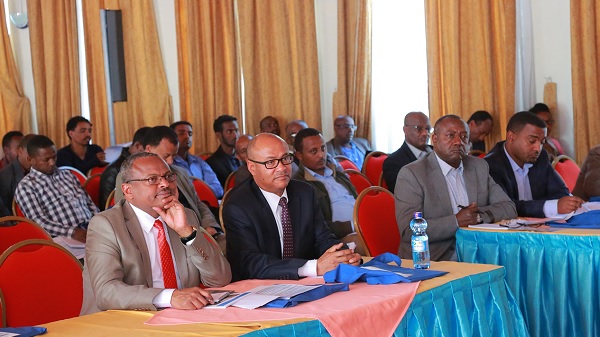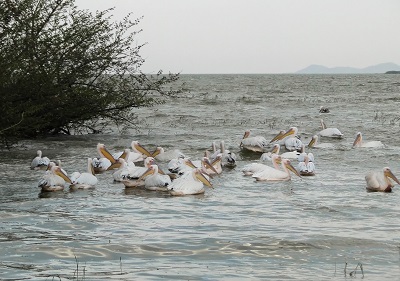
ADDIS ABABA (AAU)–Office of the Grants Coordination of the Addis Ababa University organized a national conference on the watershed development of Lake Ziway from 26-27 January, 2017 at Ghion Hotel.
The conference held under the theme ‘comprehensive study of Lake Ziway and its watershed for sustainable development’ intended to look for solutions to the tremendous challenges and threats that have cast their shadows over Lake Ziway and have severely deteriorated its quality and quantity.
In his opening remarks, Head of Agriculture and Natural Resources Bureau of the Oromia Regional State with the rank of Vice-President, Sileshi Getahun noted that Ethiopia is endowed with substantial amount of water resources some of which have come under considerable threats. He cited Haramaya Lake as an instance in reference to the fact that it completely dried up a few years ago only to be revived recently.
He went on to say that the significant contribution of Lake Ziway to the livelihood of residents of Batu Town and the surroundings as a source of water and fish supply is fast receding as the lake seems to be headed for sharing the fate of Haramaya Lake. He cited the agro-chemical inputs from the floriculture industry based within the watershed as the main cause and warned that it would be doomed unless immediate action is taken to reverse it.

The conference featured paper presentations on water quality and environment; biodiversity and their status; landscape ecology, and lake resources management and conservation.
Presenting their investigations, Hayal Desta (PhD), Chair of Ecosystem Planning and Management at the EiABC and Professor Brook Lemma, Coordinator, Office of the Grants Coordination of the AAU; on land cover and land/water use patterns of change in Ziway watershed depicted that the degradation of land and water resources in the watershed are a serious problem. According to their research findings, the demand for various uses of the watershed significantly increased, influencing the hydrological process of the watershed and the lake itself.
Presenters were scholars from Addis Ababa University, Hawassa University, Adami Tullu Research Center, Ethiopian Institute of Agricultural Research (EIAR), Debre Berhan University and the Ethiopian Wild and Natural History Society.
The paper presentations were followed by deliberation on the danger at hand and ways of averting it.
Source: Addis Ababa University
